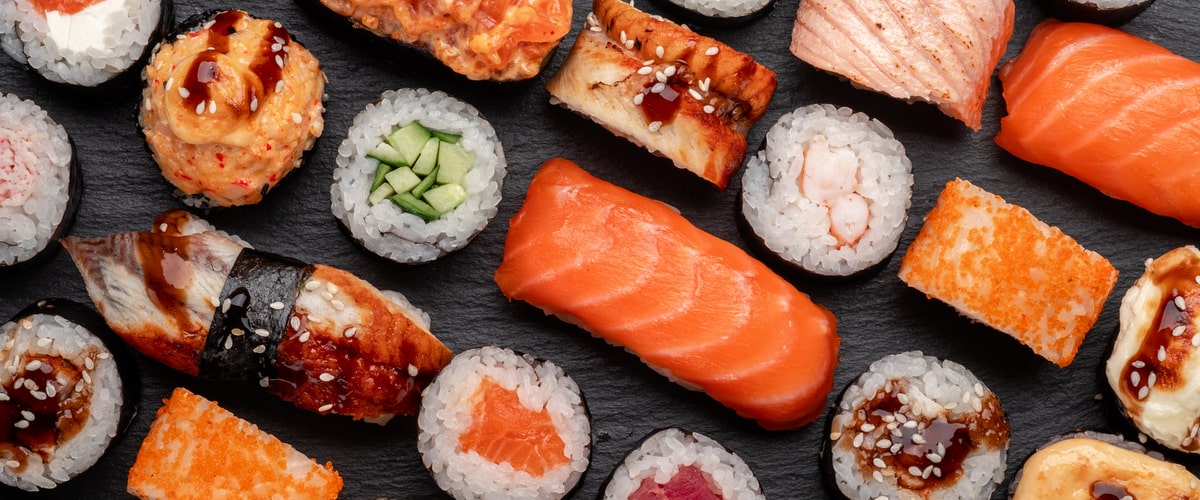The history and cultural significance of raw seafood dishes around the world
Category : Food Stories, Party Ideas, Recipes, Press Room |
Posted : Feb 16, 2023
Raw seafood dishes have been enjoyed around the world for centuries. From sushi in Japan to ceviche in Peru, these dishes are not only delicious but also have significant cultural significance. In this blog post, we’ll explore the history and cultural significance of raw seafood dishes around the world.
Japan
Perhaps the most well-known raw seafood dish in the world is sushi. The origins of sushi date back to the 2nd century A.D., when people in Southeast Asia began to preserve fish by fermenting it with rice. This technique was brought to Japan in the 8th century, where it evolved into the sushi we know and love today.

Sushi has a rich cultural significance in Japan. It is often associated with special occasions such as weddings and the Japanese New Year, and is considered to be an art form that requires years of training to master. Additionally, the importance of freshness in sushi has led to the development of a sophisticated distribution system, with seafood being transported quickly from the ocean to the restaurant.
Peru
Ceviche is a popular raw seafood dish in Peru that is made by marinating fish or shellfish in citrus juices, typically lime or lemon juice. The acid in the citrus juice “cooks” the seafood, giving it a tender texture and tangy flavor. Ceviche has been a part of Peruvian cuisine since the days of the Inca Empire, and is now considered to be the country’s national dish.

Ceviche has cultural significance in Peru, where it is often enjoyed as a lunchtime meal or as a snack on the beach. The dish is also associated with the celebration of the Day of the Sea, which is a national holiday in Peru that honors the country’s rich maritime heritage.
Korea
Hoe, or raw fish, is a popular dish in Korea that is often served with a variety of vegetables and sauces. Hoe has been a part of Korean cuisine for centuries, with references to the dish dating back to the 15th century.

In Korea, hoe has cultural significance as a symbol of purity and simplicity. The dish is often served at important occasions such as weddings and family gatherings, and is associated with good health and longevity.
Italy
Crudo, which means “raw” in Italian, is a dish of raw seafood that is often served as an appetizer. The dish typically consists of thinly sliced raw fish, such as tuna or salmon, that is seasoned with olive oil, salt, and lemon juice. Crudo has been a part of Italian cuisine for centuries, and is now a popular dish in high-end restaurants around the world.

In Italy, crudo has cultural significance as a celebration of the country’s rich seafood traditions. The dish is often enjoyed with a glass of white wine, and is associated with la dolce vita, or the sweet life.
Thailand

In Thailand, yam pla duk fu is a popular dish made with raw catfish. The dish is known for its fresh, zesty flavor and is made with a variety of herbs and spices, including lime juice, shallots, and chili peppers. The catfish is cut into thin slices and marinated in the sauce for several hours, allowing the flavors to permeate the fish.
Spain

Escalivada de bacalao is a raw salt cod dish that hails from Spain. The dish is made by soaking salt cod in water for several days, changing the water frequently to remove the excess salt. The cod is then cut into thin slices and served with roasted vegetables, such as eggplant, red peppers, and onions. The dish is typically dressed with a vinaigrette made from olive oil, vinegar, and garlic.
Hawaii, United States
Poke bowls are a Hawaiian dish that has become increasingly popular in recent years. The dish is typically made with raw ahi tuna, which is cut into cubes and marinated in a soy sauce and sesame oil-based dressing. The fish is then served on top of a bed of rice, and garnished with a variety of toppings, such as avocado, cucumber, and seaweed. The dish is known for its fresh, bright flavors and is often served as a light and healthy meal.

While these raw seafood dishes offer a unique culinary experience, it's important to note that they can present certain health risks if not prepared and handled properly. Raw seafood can contain harmful bacteria and parasites, which can cause foodborne illnesses. It's crucial to ensure that the seafood is fresh and properly handled, and to consume it from reputable sources.
Raw seafood dishes have a long and rich history around the world. From sushi in Japan to ceviche in Peru, these dishes are not only delicious but also have significant cultural significance. Whether you’re enjoying sushi on a special occasion or crudo as an appetizer at a fancy restaurant, these dishes offer a unique and flavorful experience that is sure to be unforgettable. So why not explore the world of raw seafood dishes today and discover the cultural significance of these amazing culinary creations?













